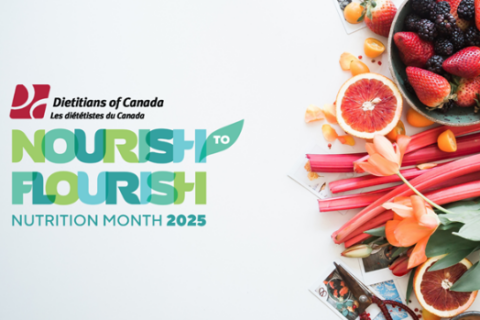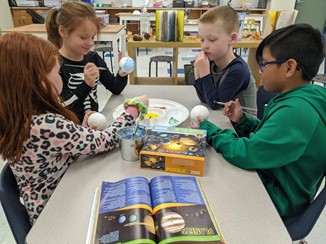Back to School
A Dietitian’s Top 5 Tips to Decrease Food Waste in School Lunches
When it comes to packing lunches, as a parent, the biggest worry is if I packed enough, or the uncomfortable feeling you get when their lunch comes back home with *largely* uneaten. And it’s no secret that food costs are on the rise, which can make this situation even more complicated and difficult for families to navigate. I get it! I’m a mom of three school-aged kiddos too. I’m also a registered dietitian who is passionate about decreasing food waste (because WOW do we North Americans waste a lot of food!) and food sustainability.
Let’s be honest… no one feels good throwing out a lot of uneaten food. While some food waste is just part of the reality of raising kids, we also want to be considerate of how much food actually gets thrown out. Having my own fair share of uneaten lunches come home in the past, I wanted to share some of my top tips to reduce lunchbox waste.
Choose the Right Lunchbox:
Consider what you may be packing your child’s lunch in. Can they open all their containers independently? Often kids are under a time crunch at school when it’s eating time, class sizes are larger and school staff are busy. It can get tricky when each child needs help opening their fruit cups, packages or containers. Or if they have many separate parts to their lunch and it is easy for something to get forgotten. Practicing with the containers before sending them in their lunch is a great first step. In addition, have your little one pack all their food into their lunch bag and backpack themselves, so they may have a better chance and remembering what was packed.
Another option is to consider a bento box so all the food for the day is in one container and easy to access. Since using a bento box I have found we buy more food in bulk like yogurt and buy less of the more expensive individual-packed food items. My favorite bento box is The Good Kiind. It’s Canadian-made and sustainably manufactured. It’s easy to clean and so simple to open and close. It’s also 100% free of toxins, super durable, and will last a LONG time. If you’re interested in purchasing one, use the code Sarah10 at checkout for 10% off.
Consider The Portion Size
The most common food to come back home (at least in my house) is vegetables or fruit. Sometimes they honestly just don’t have enough time and if they are the least preferred foods, get left behind. Why pack 6 baby carrots if they only eat 2? Don’t worry about filling the entire container and consider offering a smaller portion size. Even just 1-2 pieces can be less overwhelming and have a better chance to get eaten, or it doubles as food exposure which means you are wasting less food.
Step Up The Creativity
Changing the look of commonly offered foods can be the creative edge that changes the game. Putting away the pressures of creating an Instagram-worthy lunch, think of minimal effort with maximum impact. How can you change the shape of what you are making? Cookie cutters or sandwich cutters can be a quick and effective tool in changing the shape of their favorite sandwich. Consider what you can add to their lunch.
Food pictures with their favorite animals or picture cut-outs shaped like eyes bring to life any packed food item. You can even draw faces on fruit cups or fruit with peels like a banana or clementine with a permanent marker. I have even found some candy eyes that would be easy to add to some yogurt or on top of something. Using colorful silicon muffin liners to divide foods and adding a pop of your child’s favorite color may be enough to make the food that much more enticing.
Consider Your Child’s Preferences
As a rule of thumb when packing a lunch or offering a meal, always offer at least 2 items you know they like and will typically eat. Then if they really are hungry, they have something they can eat to satisfy that hunger and give them some energy. Including variety is one way to help a child meet a variety of nutrient needs and can help keep a child from getting bored of the same options. However, sometimes offering the same foods in their lunchbox provides a child with comfort, reassurance, and confidence to eat what they need, which means throwing out less. In these situations, we can use meals and snacks at home to work on exposure to new foods and increasing variety. You know your child(ren) best!
Collaborate With Your Child
I definitely discourage inspecting your child’s lunch in front of them or commenting on their eating performance (this may create feelings of shame or guilt). This can create a situation where they “eat to please” you or they eat beyond their personal hunger.
Instead, consider what they ate (or didn’t eat) with curiosity and non-judgment. Ask your child if they felt like you packed enough food for them, or if there is anything you could consider adding or changing to make it more appealing. Maybe certain foods don’t taste or look the same in their lunch after traveling to school. Maybe there are a variety of distractions or barriers such as chatting too much during eating times that could be supported by connecting with their teacher or school staff. Lunch packing can be a team effort in decreasing food waste and ensuring your child has what they need to nourish their body while at school.
Need a school lunch packing guide? Here is my free downloadable lunchbox printable that you can print off and put on your fridge for ideas.


